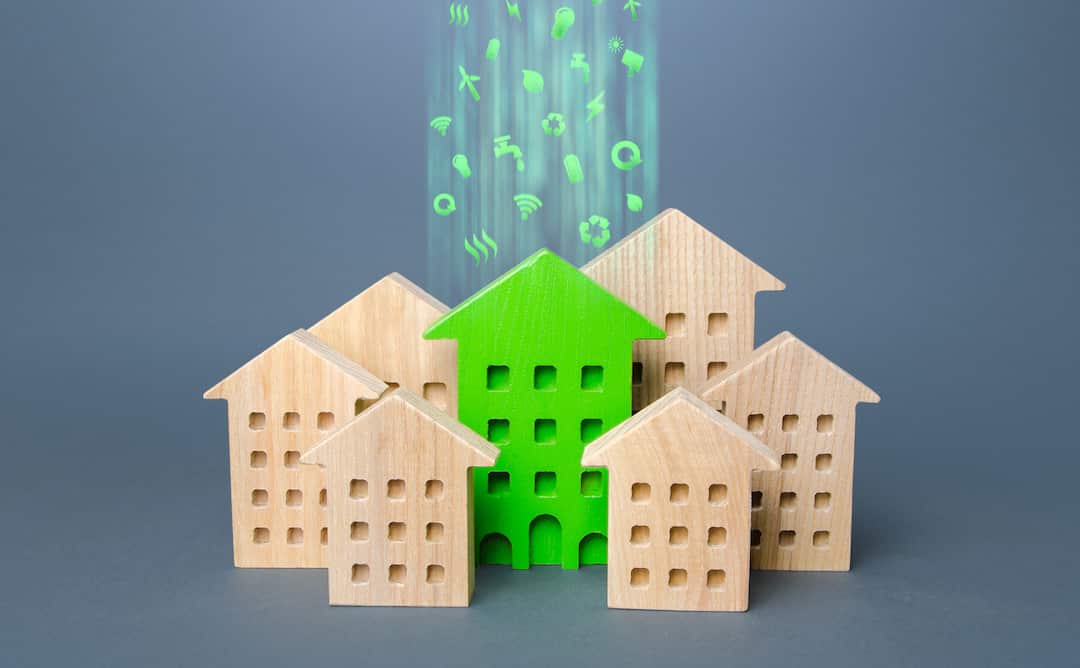
The built environment is continually evolving to incorporate methods that promote energy efficiency and sustainability practices. In this case, newer isn’t always better. As more property managers and owners strive towards meeting net zero and sustainability standards, the adaptive reuse of old buildings is proving to set a standard for achieving energy efficient and environmentally sensitive developments.
With more than 98 per cent of the building stock in most developed countries consisting of existing buildings, building practices can reflect a positive environmental impact more effectively by reinventing these existing buildings, rather than proposing new builds.
What is Adaptive Reuse?
Adaptive reuse is when the existing structure of a building is redeveloped for a modernized purpose different from its original design. For example, you can take an old mall and repurpose it as a logistical warehouse. This allows for the continued use of a viable community asset and space while reducing the added costs for demolition and new construction.
Repurposing old buildings is highly effective in optimizing building performance, energy, and time savings.
How Does it Favour Energy Efficiency and Sustainability?
Transforming older buildings to modern standards encompasses adding features or systems to increase the building’s energy and operational efficiency. Adaptive reuse, or retrofits, achieves a successful reinvention of older buildings that are eco-conscious.
The rewards of giving new life and purpose to older buildings are plentiful. Not only does the preservation of the original building retain its architectural integrity and cultural imprint, there are also significant savings financially when undergoing adaptive reuse projects. Repurposing an existing building can reduce construction costs by up to 50% compared to new developments from scratch. With the foundation of the building already in place, there is also a significant decrease in time, trades, facilities, and materials needed in the project.
Likewise, adaptive reuse allows for energy conservation through retrofitting old equipment and enclosures that drain energy. We have found that performing energy audits of a building’s key loads and baselines are easy wins to improve building energy efficiency.
According to a recent report by the American Council for an Energy-Efficient Economy (ACEEE), upcycling existing structures and their materials through comprehensive retrofits can achieve up to 40 per cent energy savings as it places less demand on the need for natural resources associated with building new structures.
An example of this is the California State University’s Los Angeles campus. By repurposing the existing building, this permitted energy efficiency improvements that transformed the aging building into the most sustainable on the campus.
With the rising concern of current levels of greenhouse gas emissions globally, the adaptive reuse of existing buildings is key to its reversal and mitigation. As buildings are responsible for 18% of Canada’s greenhouse gas emissions, retrofitting current buildings offers an opportunity to enhance their energy efficiency and resiliency while promoting eco-efficiency.
Adaptive reuse offers significant opportunities to lower these emissions by prolonging the useful life of current materials, especially those with long-life durability and high embodied energy, such as steel and concrete.
As a wise man once said, “the greenest building is one that’s already been built”.
It’s vital to implement a strategy of adaptive reuse in the built environment. This can help your business achieve your energy efficiency and sustainability goals. Reinventing these buildings through retrofitting processes is a highly practical solution as it preserves the heritage of the building, while enhancing the urban environment.
With the vast stock of existing buildings, it’s the smart choice to use current resources to retrofit these buildings for additional energy conservation that reveals their unique passive potentials.
Read more: